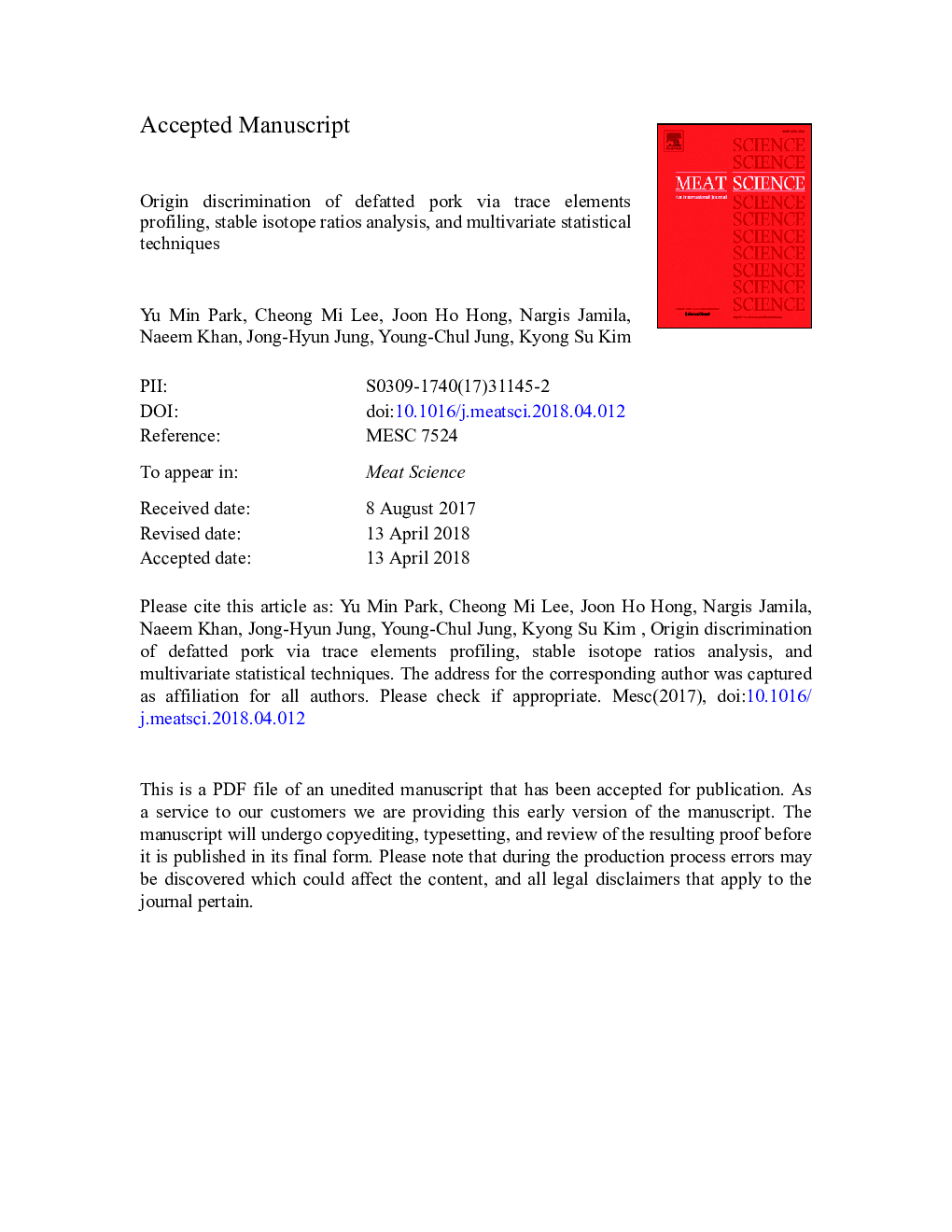| Article ID | Journal | Published Year | Pages | File Type |
|---|---|---|---|---|
| 8502643 | Meat Science | 2018 | 47 Pages |
Abstract
This study verified the origin of 346 defatted Korean and non-Korean pork samples via trace elements profiling, and C and N stable isotope ratios analysis. The analyzed elements were 6Li, 7Li, 10B, 11B, 51V, 50Cr, 52Cr, 53Cr, 55Mn, 58Ni, 60Ni, 59Co, 63Cu, 65Cu, 64Zn, 66Zn, 69Ga, 71Ga, 75As, 82Se, 84Sr, 86Sr, 87Sr, 88Sr, 85Rb, 94Mo, 95Mo, 97Mo, 107Ag, 109Ag, 110Cd, 111Cd, 113Cd, 112Cd, 114Cd, 116Cd, 133Cs, 206Pb, 207Pb, and 208Pb. Content (mg/kg) of 51V (0.012), 50Cr (0.882), 75As (0.017), 85Rb (57.7), and 87Sr (46.3) were high in Korean pork samples whereas 6Li, 7Li, 59Co, 55Mn, 58Ni, 84Sr, 86Sr, 88Sr, 111Cd, and 133Cs were found higher in non-Korean samples. The results of discriminant analysis showed that the trace elements content and stable isotope ratios were significant for the discrimination of geographical origins with a perfect discrimination rate of 100%.
Related Topics
Life Sciences
Agricultural and Biological Sciences
Food Science
Authors
Yu Min Park, Cheong Mi Lee, Joon Ho Hong, Nargis Jamila, Naeem Khan, Jong-Hyun Jung, Young-Chul Jung, Kyong Su Kim,
